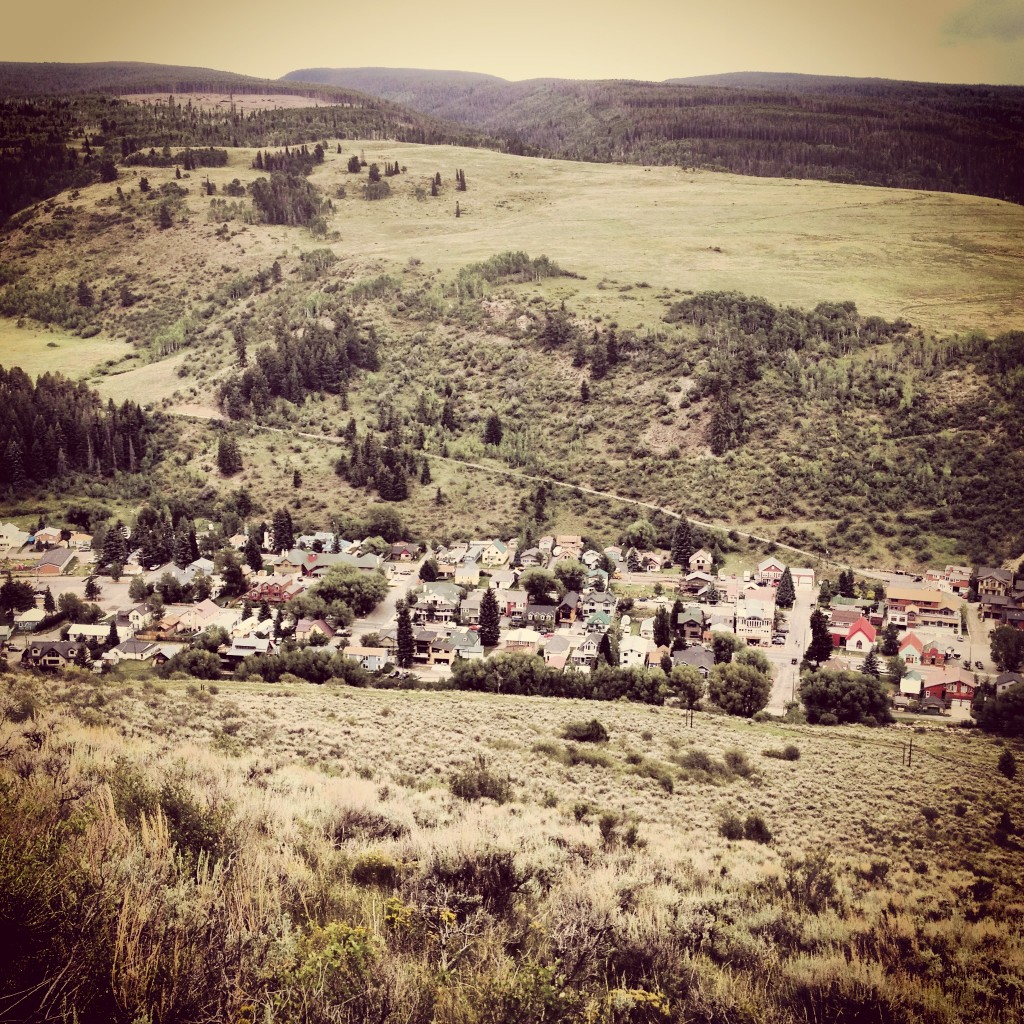
by Emily Kate Long
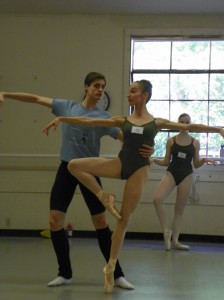
As I wrap up my summer travels, I’ve been working to identify a theme for the experiences I’ve had over the past two months. It’s been a summer of learning what to do and what not to do: in the studio as a teacher and student, onstage and in the audience, and in how I interact with other people and with myself. How do I take everything in during class while holding on to what I know works? What about carving out time for physical and mental rest and recuperation? How can I be an open yet critical audience member, and how can I more easily drop personal hang-ups and anxiety to fully experience each moment of performing?
To begin with, a great aid in approaching my physical needs honestly was Dr Linda Hamilton’s most recent book, The Dancer’s Way (St Martin’s Griffin, 2008). Hard science wrapped in compassion and empathy, The Dancer’s Way was a timely reminder that I’m not the machine I’d like to believe. My body—and everyone else’s—needs what it needs, period: fuel and rest. That means sufficient calories, macronutrients, and fluids every day. It means 8-10 hours of sleep each night. It means time each week for restorative activity. It means giving muscles a chance to forget about dancing for a little while and repair themselves every few months, and then giving them enough time to return to a full rehearsal schedule. Put simply, we are people first—physical beings with physical needs that must be acknowledged and met before we can demand anything more of our bodies or minds. The Dancer’s Way is the collection of information I would have loved to have when I was a student, and I plan on sharing a lot of this information with my students.
My strategy this summer was to avoid the trouble of getting back in shape by not planning any rest. Bad move. I would have avoided serious physical and emotional burnout, along with a lot of guilt and self-judgment, if I had just built rest into my schedule to begin with! It’s still a process, but realizing my body can’t take care of itself enabled me to relish being completely immersed in dance all summer.
Being present at two summer intensives (Saratoga Summer Dance Intensive and Vail Valley Dance Intensive) as both a student and a teacher allowed me to analyze every aspect of class. It was wonderful to take multiple classes per day and test endless hypotheses on myself and on others. On an interpersonal level, I got to observe and engage in many different communication styles, classroom organization strategies, and the particular learning processes of different age groups. Being in classes of mixed ability shone light on the importance of teachers’ knowing all the building blocks and progression of technique in order to accommodate students of different levels.
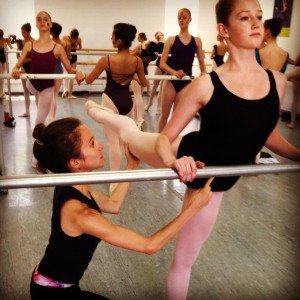
Here, another truth: finding out what students know requires diagnostic work, and that usually means working backwards, peeling off layers of complexity until you arrive at the simplest pieces of technique. It is more effective to begin at the beginning and progress more quickly than expected with unfamiliar students than to assume too much knowledge and force them to imitate their way through steps they don’t understand. Additionally, there can never be too many reminders of why we put ourselves through this: we want to express art through our bodies, not use it as a vehicle for self-glorification or self-judgment. We must be supremely disciplined, but also forgiving of and honest with ourselves.
In that vein, there were moments of real soul-baring, both in class and onstage. It was incredibly inspiring to witness teachers so passionately and so lovingly tear open our shells so that the real us could come out. It was also a privilege to see such generous artists perform; I saw New York City Ballet in Saratoga Springs three times, and nine performances at the Vail International Dance Festival. Notable were NYCB’s Tiler Peck and Amar Ramasar in In The Night by Jerome Robbins; Peck, Robbie Fairchild, and Sterling Hyltin in Peter Martins’ The Waltz Project; Ashley Bouder as the Firebird; BalletX in works by Matthew Neenan; artists of the Martha Graham Dance Company; and two works by Christopher Wheeldon, Liturgy and 5 Movements and 3 Repeats. These performances reminded me that art is about being honest and generous, not about being perfect.
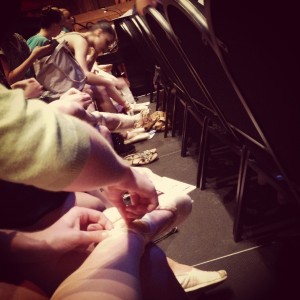
The students of Vail Valley Dance Intensive were fortunate to participate with NYCB Moves in a fringe event for VIDF called “UpClose: Stravinsky by Balanchine.” Lindy Roy and I set the first movement of the corps de ballet in Balanchine’s Symphony in Three Movements on them, and they performed it for a public lecture/demonstration, with members of NYCB Moves in the principal roles. Watching the girls readily embrace such a challenge and responsibility was truly rewarding, and being with them in the wings as they encouraged and supported one another despite their nerves was heartwarming.
Overall I feel inspired and excited to get back to rehearsal and get back to my students. Moving forward, I made up a checklist to help me keep sight of my priorities when things get hectic. We all have those moments: it can be hard to say “no” to an extra project or make time to put first things first and take good care of ourselves. This is my self-test, based on what I observed about myself, my classmates and students, and my fellow teachers this summer:
- Am I meeting my body’s physical needs as best I can? Do I need to ramp it up or back off to get the most from myself?
- Am I managing my time well? Are my activities promoting or detracting from my wellness?
- Am I keeping track of what works and what doesn’t? Am I sharing my experience and knowledge generously and asking for help or advice when I need it?
Tiptoeing the line between maximum output and over-training has reinforced something I heard a lot as a student, and tell my own students: Hard work is great, but the ballet gods don’t give out points for being a martyr. Working smart will produce better results. It’s far more productive to accept whatever truths our bodies and circumstances present, and then do the very best we can with what’s in front of us—the results are often surprising.
Readers, I would love to hear your stories of pushing the limits and what you learned from crossing the line!
Dr Linda Hamilton’s website:
http://www.drlindahamilton.com/
YouTube link for highlights of “UpClose: Stravinsky By Balanchine:” http://www.youtube.com/watch?v=3h0fL6qMv9o
Vail International Dance Festival website:
https://vaildance.org/Online/default.asp
VIDF YouTube channel:
http://www.youtube.com/user/VailValleyFoundation
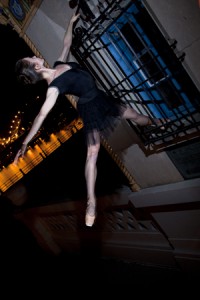
Contributor Emily Kate Long began her dance education in South Bend, Indiana, with Kimmary Williams and Jacob Rice and graduated in 2007 from Pittsburgh Ballet Theatre School’s Schenley Program. Ms Long attended Milwaukee Ballet School’s Summer Intensive on scholarship before being invited to join Milwaukee Ballet II in 2007. She also has spent summers studying at Saratoga Summer Dance Intensive, Miami City Ballet, Pittsburgh Ballet Theatre School, Pittsburgh Youth Ballet, and Ballet Chicago.
Ms Long has been a member of Ballet Quad Cities since 2009. She has danced featured roles in Deanna Carter’s Ash to Glass and Dracula, participated in the company’s 2010 tour to New York City, and most recently performed the title role in Courtney Lyon’s Cinderella and the role of Clara in The Nutcracker. Prior to joining Ballet Quad Cities Ms Long performed with Milwaukee Ballet and MBII in Michael Pink’s The Nutcracker and Candide Overture, Petipa’s The Sleeping Beauty and La Bayadére, Balanchine’s Who Cares?, Bournonville’s Flower Festival in Genzano and Napoli, and original contemporary and neoclassical works by Tom Teague, Denis Malinkine, Rolando Yanes, and Petr Zaharadnicek.




